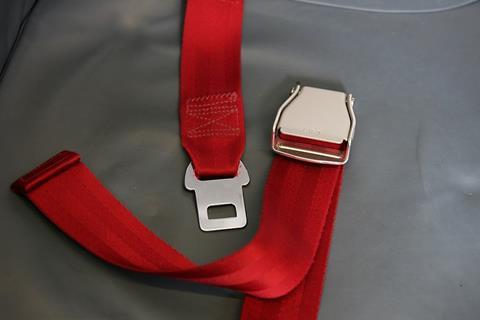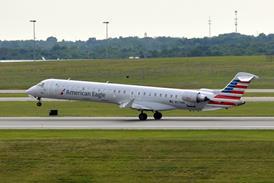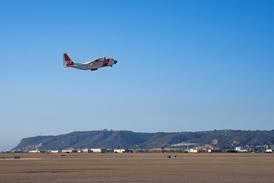US regulators are urging operators to adopt safer passenger restraints for front-row seats, after research indicated that lap seat-belts alone could result in severe injuries in an emergency landing.
Current guidance permits operators to install seats set back from cabin walls and monuments, which allow their occupants to flail forward in the event of an accident.
But the US FAA says recent research has detailed the potential for serious spinal and other injuries resulting from “excessive body flail” in seat configurations which – with only lap belts fitted – permit unrestrained forward motion of the upper torso.
The potential for such injuries was “not considered likely”, it says, until recent research tests used post-mortem human surrogates – the formal term for cadavers – to compare their response to those of crash-test dummies.

An investigation undertaken by the Medical College of Wisconsin, and presented at a 2016 conference in Atlantic City, states that the injury biomechanics of standard lap belts were previously “not well understood”.
Its study into motion of post-mortem human surrogates, wearing lap belts under emergency landing loads, showed that the resulting injuries were “severe”.
These included transection of the vertebral column, fractures to the femur, and multiple rib fractures. The femur fractures were probably caused by the lap belt’s slipping below the pelvis.
In a 1 August safety bulletin, the FAA cites analysis of landing accidents including the Turkish Airlines Boeing 737-800 crash at Amsterdam in 2009 and the Asiana 777-200ER crash at San Francisco in 2009.
“Occupants with free flail suffered spinal injury, while occupants whose torso was supported by seatback contact did not,” it states.
It says the guidance permitting seat configurations that allow for free flail – notably those in which seats are set back, with only lap belt restraints – will not meet updated methods of compliance for preventing serious passenger injury in emergency landings. The FAA is changing this guidance to require support to the torso through extra safety features.
“Until this guidance is published, the FAA is promoting voluntary adoption of installing safety-enhancing features such as airbags and shoulder harnesses,” it says.


























